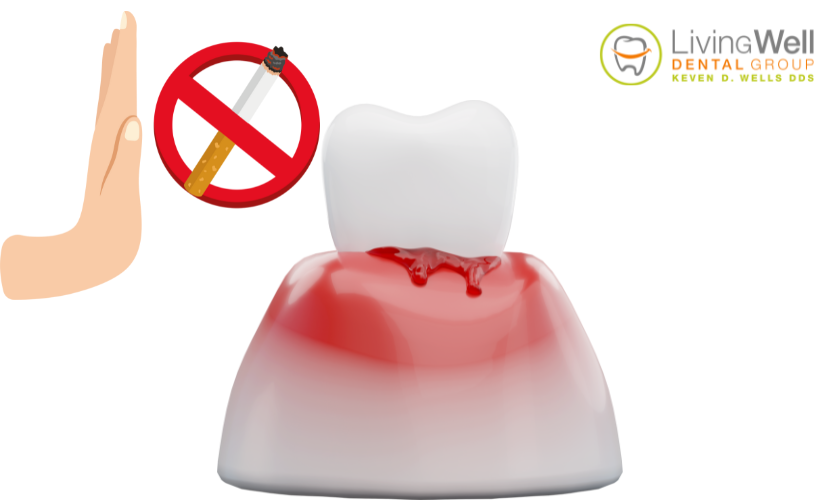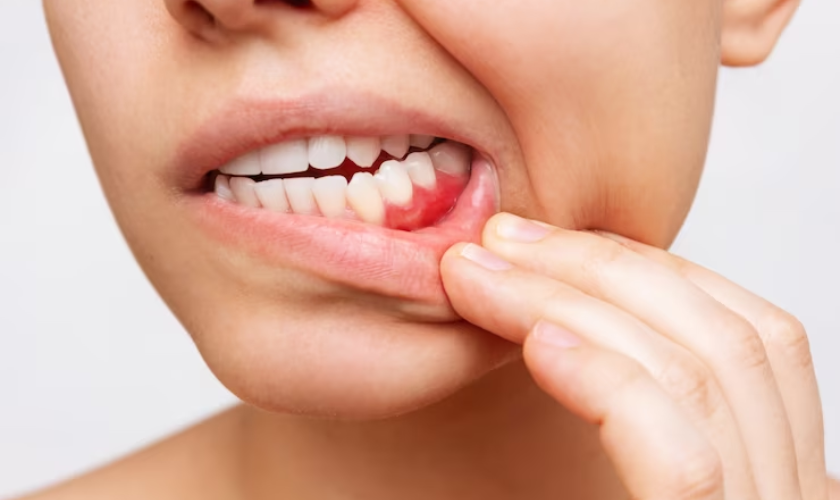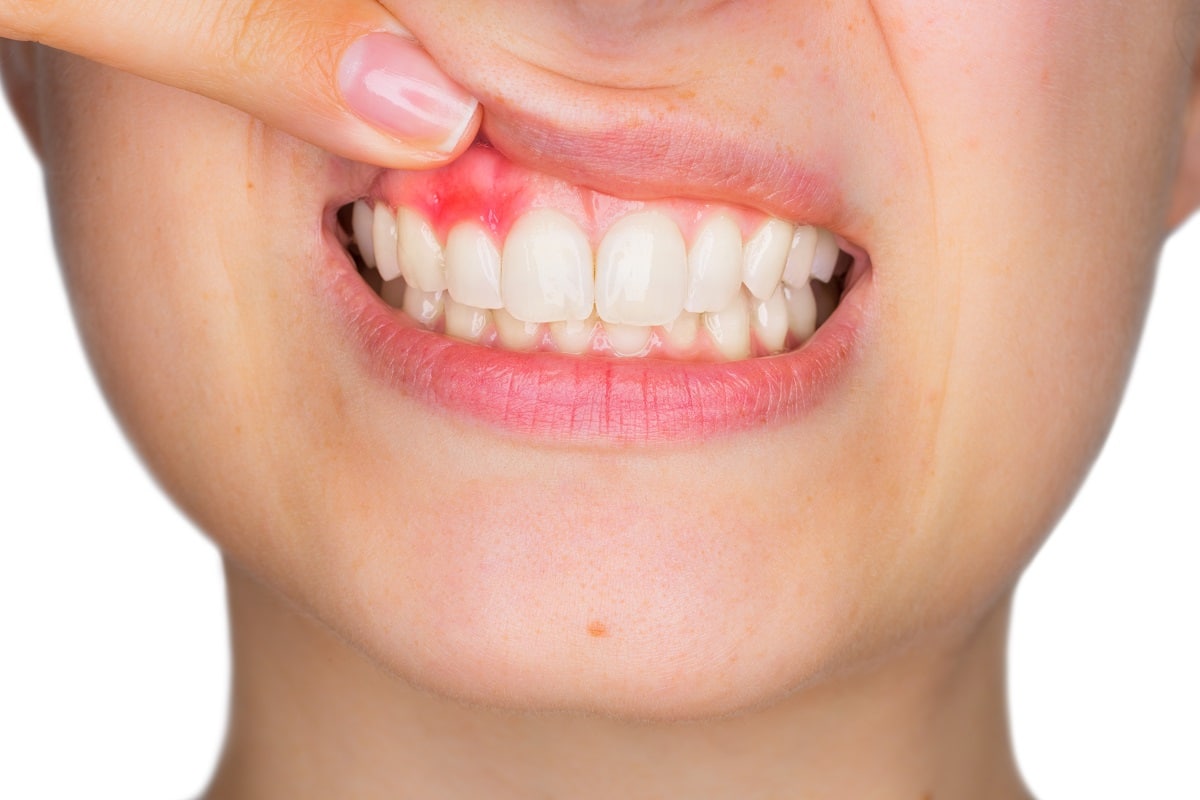1516 Legacy Cir, Naperville, IL 60563
Can Smoking Lead to Gum Disease? An In-Depth Analysis

Smoking is known to cause serious health problems, like lung cancer and heart disease. But many people don’t realize it also harms your gums. This blog will explain how smoking leads to gum disease, what signs to watch for, how to prevent it, and why this is a big issue for everyone’s health.
Understanding Gum Disease
Gum disease, or periodontal disease, encompasses a range of inflammatory conditions affecting the tissues surrounding the teeth. It is broadly categorized into two stages: gingivitis and periodontitis.
- Gingivitis: This is the initial, milder form of gum disease characterized by red, swollen gums that may bleed during brushing or flossing. It is primarily caused by the accumulation of plaque, a sticky film of bacteria on the teeth. If left untreated, gingivitis can progress to periodontitis.
- Periodontitis: This is a more severe form of gum disease where the inflammation spreads deeper into the supporting structures of the teeth, including the bone. It leads to the formation of pockets between the teeth and gums, which become infected. Over time, this can result in tooth loss and damage to the jawbone.
How Smoking Contributes to Gum Disease

The relationship between smoking and gum disease is well-documented in scientific literature. Several mechanisms explain how smoking leads to the development of gum disease:
- Impaired Immune Response: Smoking weakens the immune system, making it harder for the body to fight off infections, including those in the mouth. Nicotine and other chemicals in tobacco reduce the production of antibodies and impair the function of neutrophils, which are crucial for responding to bacterial infections.
- Reduced Blood Flow: Nicotine causes blood vessels to constrict, reducing blood flow to the gums. This not only hampers the delivery of essential nutrients and oxygen to the gum tissue but also limits the removal of waste products, impairing the healing process.
- Increased Plaque and Tartar: Smokers tend to have more plaque and tartar buildup on their teeth. The chemicals in tobacco products can alter the oral microbiome, promoting the growth of harmful bacteria that cause gum disease.
- Altered Inflammatory Response: Smoking modifies the inflammatory response, leading to an overproduction of pro-inflammatory cytokines. This heightened inflammatory state contributes to tissue destruction and bone loss associated with periodontitis.
- Delayed Healing: The healing process in smokers is significantly slower compared to non-smokers. This is particularly concerning in the context of periodontal treatments, where optimal healing is essential for successful outcomes.
Clinical Manifestations of Gum Disease in Smokers
Gum disease in smokers can present differently than in non-smokers, often making it harder to diagnose and treat. Some of the clinical manifestations include:
- Less Apparent Symptoms: Smokers may have less noticeable symptoms of gum disease despite more severe disease progression. For instance, due to reduced blood flow, there may be less gum bleeding and redness, masking the signs of inflammation.
- More Severe Disease: Studies have shown that smokers are more likely to suffer from severe periodontitis, with greater bone loss and deeper periodontal pockets compared to non-smokers.
- Refractory Periodontitis: This is a form of periodontitis that does not respond well to conventional treatment. Smokers are at higher risk for refractory periodontitis, complicating management and increasing the likelihood of tooth loss.
- Gum Recession: Smoking can lead to gum recession, exposing the roots of the teeth and increasing sensitivity. This recession is not only a cosmetic issue but also a functional one, as it can lead to increased plaque accumulation and further periodontal problems.
The Impact of Quitting Smoking on Gum Health
The benefits of quitting smoking for oral health are profound and begin to manifest soon after cessation. Some of the notable improvements include:
- Enhanced Immune Function: After quitting, the immune system gradually recovers, improving the body’s ability to combat infections and heal from inflammation.
- Improved Blood Circulation: Blood flow to the gums improves, enhancing nutrient and oxygen delivery and waste removal, which supports healthier gum tissue and faster healing.
- Reduced Plaque Accumulation: Former smokers tend to have less plaque and tartar buildup over time, reducing the risk of gum disease.
- Better Treatment Outcomes: Periodontal treatments become more effective once a person quits smoking, with better healing and lower recurrence rates of gum disease.
- Lowered Risk of Tooth Loss: The risk of tooth loss decreases significantly after quitting smoking, as the progression of gum disease slows and the oral environment stabilizes.
Preventive Measures and Treatment
Preventing and managing gum disease in smokers involves a multi-faceted approach that includes both lifestyle changes and professional dental care.
- Smoking Cessation: The single most effective measure to improve gum health is to quit smoking. Resources such as nicotine replacement therapy, prescription medications, counseling, and support groups can aid in this process.
- Regular Dental Visits: Routine check-ups and cleanings are crucial for early detection and management of gum disease. Dentists can provide professional cleaning to remove plaque and tartar and monitor for signs of periodontal disease.
- Effective Oral Hygiene: Brushing twice a day with fluoride toothpaste, flossing daily, and using an antiseptic mouthwash can help maintain oral hygiene and prevent the buildup of plaque.
- Healthy Diet: A diet rich in vitamins and minerals, particularly vitamin C and calcium, supports gum health and overall immune function.
- Professional Periodontal Treatment: For those already suffering from gum disease, treatments such as scaling and root planning, periodontal surgery, and the use of antibiotics may be necessary. These treatments are more effective when combined with smoking cessation.
Public Health Implications
The link between smoking and gum disease extends beyond individual health, highlighting significant public health implications. Smoking-related gum disease contributes to the overall burden of oral health issues, impacting healthcare costs and quality of life.
- Reduced Economic Burden: The treatment of periodontal disease and its complications, such as tooth loss and prosthetic replacements, imposes a substantial financial burden on healthcare systems. Smoking cessation programs can be cost-effective in reducing this burden.
- Quality of Life: Gum disease affects not only oral health but also overall well-being, including aspects such as nutrition, self-esteem, and social interactions. Addressing smoking as a risk factor for gum disease can improve the quality of life for many individuals.
- Preventive Health Strategies: Public health initiatives that focus on smoking prevention and cessation can have a significant impact on reducing the prevalence of gum disease. Education campaigns, policy changes such as smoking bans, and support for cessation programs are critical components of these strategies.
- Interdisciplinary Approach: Collaboration between dental professionals, healthcare providers, and public health organizations is essential to address the multifaceted impact of smoking on oral health. Integrating smoking cessation counseling into routine dental visits can be an effective strategy.
Quit Smoking To Save Your Beautiful Smile
Quitting smoking greatly benefits your gums. It boosts your immune system, improves blood flow, reduces plaque, and helps gum treatments work better. To keep your gums healthy, it’s important to practice good oral hygiene, visit the dentist regularly, and eat a balanced diet. These steps are especially crucial for current and former smokers.
On a larger scale, educating people about the link between smoking and gum disease and supporting smoking cessation efforts can have a significant impact. By reducing the damage smoking does to oral health, we can improve people’s overall well-being and lower the economic and social costs of gum disease.
Although tackling smoking-related gum disease is challenging, the rewards are significant. Through prevention, treatment, and public health initiatives, we can greatly improve oral health for smokers and enhance their quality of life.









